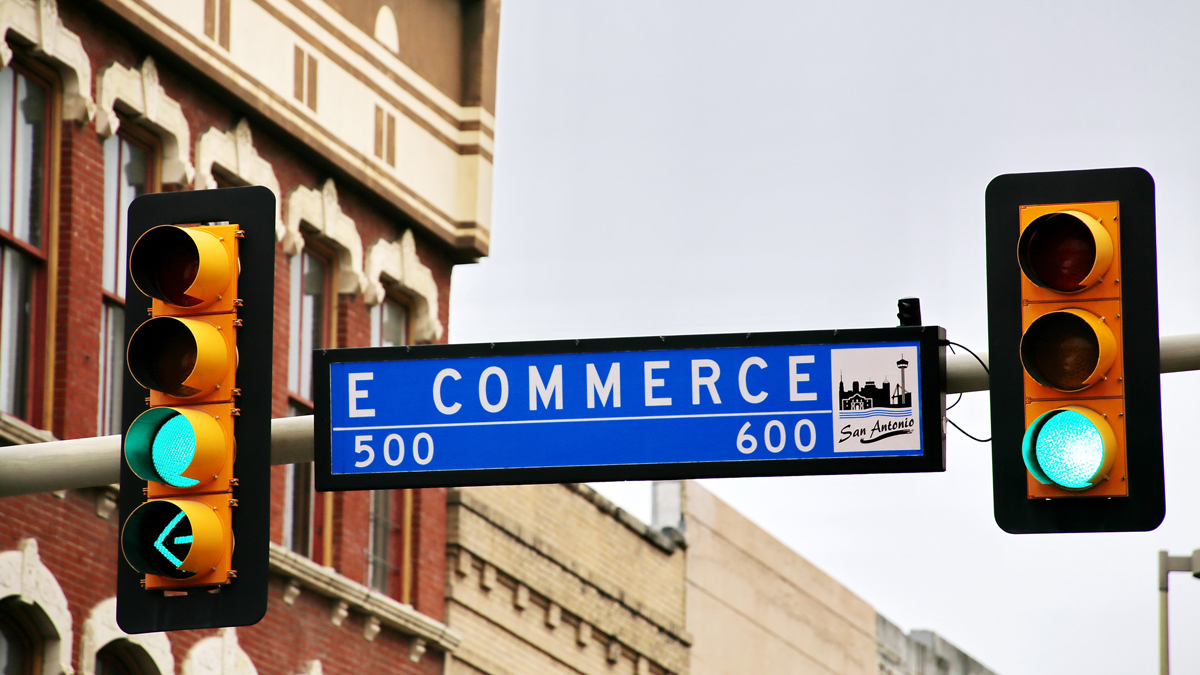In these unprecedented times of lockdown, social distancing, and self-isolation, the business landscape is forced to reinvent itself in order to provide customers with continuous access to essentials and supplies.
Author Radiana Pit | Copperberg

As such, a new business model has started to emerge — and it’s hyperlocal. According to recent research: “the online hyperlocal services market is poised to grow by $451.64 million during 2020-2024 progressing at a CAGR of 18% during the forecast period.”
So, what is hyperlocal eCommerce and how will it impact the new normal?
Hyperlocal eCommerce — defined
In essence, hyperlocal eCommerce targets consumers within a well-defined geographic area such as a street, neighborhood, community, city, county, and so on. As more and more consumers will resort to online orders and social distancing will become a way of life, in-person visits to supply points will continue to decrease.
The hyperlocal trend is driven by shifting customer behavior and the demand for premium services and convenience — the latter becoming a priority under pandemic-related constrictions. This pertinent, albeit not new, consumer preference to purchase online is enforcing the shift to hyperlocal deliveries, which will greatly impact supply chains and logistics.
Hyperlocal supply chains and logistics
Although currently unstructured, it is expected that the supply chain and logistics sector will experience a new wave of reformation, as businesses will strive to improve their ability to operate hyperlocally and expand to new geographies in the coming decade.
New frameworks and architectures will need to be designed in order to enhance supply chain deliveries, strategically distribute business operations systems, and continue to leverage centralized technology management benefits.
The small and midsized businesses currently leveraging the benefits of hyperlocal delivery can serve as inspiration for bigger companies and eCommerce titans to downsize, innovate their digital platforms, and join their ranks.
The hyperlocal on-demand delivery model
Logistics providers are currently writing the rules for the hyperlocal on-demand delivery model while also supporting retailers who are unable to engage in on-demand deliveries themselves.
By using digital platforms, offline businesses can connect with customers to enable instant purchases that are then acquired and delivered by the logistics providers. One of the most appealing aspects of using a digital platform for this process is that it enables customers to monitor the entire delivery process in real time.
This is what makes the hyperlocal model so effective — it promotes trust. Enabling the consumer to gain visibility into the supply chain and see the process from purchase to sourcing to delivery cements assurance and conviction that their order is handled according to their expectations.
Another appealing aspect of the hyperlocal model is speed. Hyperlocal businesses are able to deliver products and services at a way faster pace than their larger online counterparts. This speed of delivery is possible thanks to the consumer’s proximity to the source.
Becoming hyperlocal
For those understanding the appeal of the hyperlocal business model, creating a strategy based on a clear objective-oriented vision is the first step in building a sustainable and profitable hyperlocal on-demand delivery network.
You should take into account the partnerships you will have to strike to make it work, depending on your industry and services. So, consider the commissions and delivery charges in your revenue flows.
Beyond that, the rules of hyperlocal eCommerce are still being written but small and midsized businesses have already provided a blueprint for implementation that can be adapted based on industry, geography, products, objectives, etc.
The existing pattern of creating a hyperlocal delivery model consists of the following recommendations:
- Determine what products and services you want to deliver;
- Identify your target audience and localize it;
- Partner up with a hyperlocal logistics provider and local distributors/retailers;
- Partner up with an on-demand app development provider.
Building on these recommendations, you could create a comprehensive network, innovate your distribution framework, and reach new territories.
Facilitating consumer needs via technology
It goes without saying, but technology plays a significant role in making hyperlocal businesses work. The entire hyperlocal model is driven by the on-demand needs of consumers who not only expect their deliveries in one piece but also expect a positive user experience when utilizing your apps.
This is where technology comes in to ensure your users have the best experiences possible.
For example, deliveries might be delayed by the current infrastructure and traffic. However, mobile apps or features can help counter traffic congestion and plan the delivery route in the most time-efficient manner. Additionally, route planning solutions make last-mile delivery cost-effective by reducing fuel costs.
Automation can also help make the user experience more positive by enabling free shipping costs — something that most consumers expect nowadays, especially for larger orders. In fact, any additional costs, no matter how justifiable they are, will make users churn. Luckily, automation can help reduce the cost of click-and-collect orders, on top of providing other benefits such as return management.
Last but not least, the use of shipment sorting and rider allocation software will spare you from the exhausting task of assigning delivery zones manually. This software solution will automatically assign available drivers to delivery zones, saving you precious time and resources otherwise wasted on limited profitability.
Are considering becoming hyperlocal?
With a solid hyperlocal on-demand delivery model in place, the logistics industry can reach new heights in the coming years. However, the strain of rapid, even urgent, deliveries and the constant struggle with shifting consumer expectations can run businesses into the ground. Fortunately, technology can help produce the opposite outcome and unlock success in all key areas including security, smart route planning, ROI, and more.
While hyperlocal best practices are still considered works in progress, a few things are clear: going hyperlocal enhances transparency, enforces new business standards, supports local retailers, and creates a new competitive edge.
If you’re considering embracing this emerging business model, focus on localizing the right audience, building the right partnerships, and developing an app that will hook your users to your network.






























